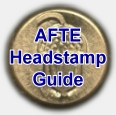|
Pages: [1] Go Down
0 Members and 1 Guest are viewing this topic. Pages: [1] Go Up
|
Re: Barrel length/depth gauge (Hott Rod replacement) by Nathan Von Rentzell
[Today at 12:27:13 PM] State of Connecticut Division of Scientific Services Firearm Examiner by Joe Rainone [Today at 08:10:43 AM] Firearm & Toolmark Examiner and Examiner Sr. -Austin Forensic Science Department by Steven Aston [Yesterday at 09:29:28 AM] AFTE 2024 West Virginia University Subclass Study by Eric Freemesser [April 22, 2024, 03:47:49 PM] Firearms Examiner (, II or III) position in Maryland by Heather Johnson [April 18, 2024, 05:15:52 PM] Re: AFTE 2024 Merchandise - Deadline to Order is Today (4/15/24) by Charles Clow [April 17, 2024, 06:44:37 PM] Re: AFTE 2024 Merchandise - Deadline to Order is Today (4/15/24) by Jamie Becker [April 17, 2024, 06:32:37 PM] |










 Guests: 36
Guests: 36 Hidden: 0
Hidden: 0 Users: 3
Users: 3
 Total Members:
Total Members: 
